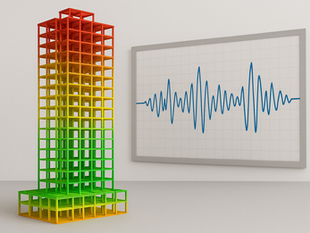
The Human Side of Verticality: Designing Skyscrapers for People
1
7
0
When we envision skyscrapers, our minds often gravitate towards their imposing heights, architectural grandeur, and the technological feats they represent. However, beyond these marvels lies a crucial aspect that is sometimes overshadowed, the human experience within these towering structures.
The concept of verticality in architecture should prioritize the well-being and daily experiences of its occupants. It’s not enough to create visually striking structures; tall buildings must also provide comfort, promote health, and support human connection.

The Psychological Impact of Height
Living or working in high-rise buildings offers breathtaking views and a sense of detachment from the bustling streets below. While this elevation can evoke feelings of empowerment and tranquillity, it can also lead to sensations of isolation or disconnection from the community at ground level. Recognizing this, vertical designs should incorporate elements that foster a sense of belonging and connectivity.
Harnessing Natural Light and Ventilation
The strategic use of natural light and ventilation plays a pivotal role in enhancing the comfort and health of individuals inside tall buildings. Designs should prioritize:
Maximized Daylight Exposure: With expansive windows and thoughtful orientation, natural light can permeate deeply into the building, reducing reliance on artificial lighting.
Optimized Ventilation Systems: Cross-ventilation and green terraces can enhance air quality and thermal comfort, promoting healthier indoor environments.
Creating Communal Spaces
To counteract potential feelings of isolation, it’s essential to design communal areas that encourage social interaction. Features like sky gardens, rooftop lounges, shared terraces, and co-working spaces can serve as hubs for residents or workers to gather, collaborate, and connect.
Material Selection and Sensory Experience
The materials used within a high-rise building greatly influence how people feel within those spaces. By selecting natural, tactile, and warm finishes, such as wood, stone, or textiles, designers can create environments that feel grounded and comforting, even at great heights.
Conclusion
Skyscrapers should be more than landmarks on a skyline. They should be places where people thrive, mentally, emotionally, and socially. As architects and urban designers, we have the responsibility to design vertical environments that elevate the human experience just as much as they elevate our cities.






